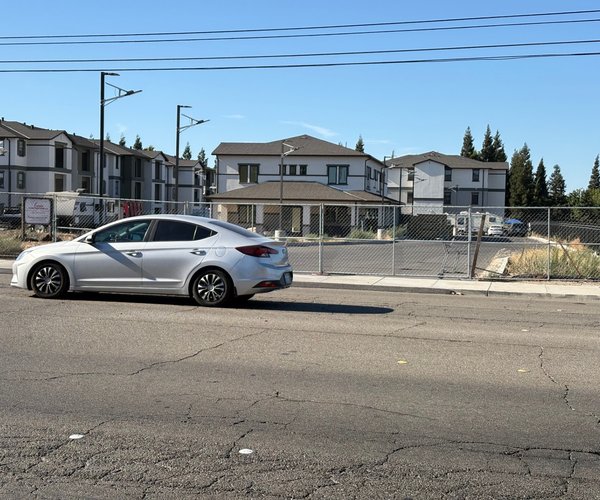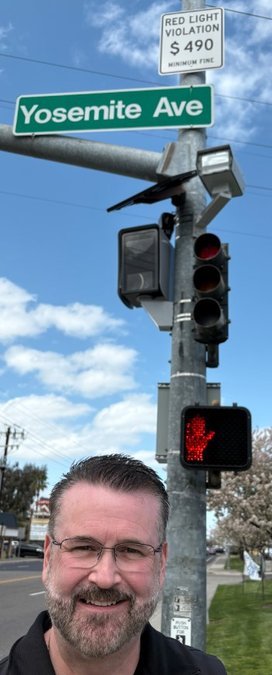All is not lost when it comes to California.
And — thanks to an initiative launched in October 2020 by Governor Gavin Newsom — more of it won’t be lost.
Among all of the rancor of the homeless quagmire, the financial tape work that is the high speed rail projects, and the myopic tunnel —to name a few — have created, there have actually been forward thinking endeavors that Newsom has managed to advance.
One of them that is clearly a generational accomplishment that future Californians will also benefit from is Project 30x30.
The 30x30 goal is to help accelerate conservation of California lands and coastal waters through voluntary, collaborative action with partners across the state.
The 30x30 refers to 30 percent of California placed in conservation protected by the year 2030.
In 2022, 23.8% of lands and 16.2% of coastal waters were conserved.
Conservation efforts now stand at 25.2 percent of the land within California’s borders and 16.2 percent of the coastal waters.
There are three objectives: conserve and restore biodiversity, expand access to nature, and mitigate and build resilience to climate change.
Before anyone goes postal on the third objective, this is about as passive of a way you can get to do so.
It is protecting the climate through an action that protects ecological systems and widens access to the natural wonders of California while at the same time placing areas off limit to development.
It’s billed as forever but that is a relative term considering scientists believe in 5 million to 15 million areas part of the state west of the San Andreas Fault will be severed from the continent.
Earlier this month, the California Natural Resources Agency announced since 2020 nearly 1.5 million acres — or roughly 2,350 square miles — have been added to the inventory of conserved land.
Among the largest additions was the expansion of two national monuments.
There were roughly 120,000 acres in two national monument expansions.
The San Gabriel Mountains National Monument in the San Bernadino National Forest in Southern California that includes 10,680 foot Mt. Baldy.
The Berryessa Snow Mountain National Monument located in Northern California.
An addition virtually in Manteca’s backyard is the 1,600-acre Dos Rios State Park at the confluence of the Tuolumne and San Joaquin rivers.
San Joaquin County almost scored more conserved land but efforts to purchase the 50,500-acre N3 Ranch for a state park that covers part of Alameda, Santa Clara, San Joaquin, and Stanislaus counties in the Diablo Range southwest of Tracy were derailed when the land as sold to a Danville developer.
Areas already counted in the tally prior to 2022 includes regional open space and parks in the East Bay area and federal endeavors such as national monuments, national monuments and natural seashores like Point Reyes.
Point Reyes is a perfect example of why land needs to be conserved.
The tipping point to set aside the 71,082 acres in Marin County that includes some of the most spectacular coastline in California, was a 1962 development plan to build homes that only the well off could afford on the slopes above Drake’s Bay.
Do not confuse land that is being conserved with state or federally controlled land.
Uncle Sam controls 50.7 percent of California’s 104.8 million acres.
It does include protected areas such as the 3.4 million acres within Death Valley National Park. It happens to be the largest national park outside of Alaska.
But it also includes units controlled by federal agencies such as Edwards Air Force. It is the second largest base in the Air Force, spanning 301,000 acres across Kern, San Bernardino, and Los Angeles counties.
The biggest non-forest federal holding in California is the Naval Air Weapons China Lake in Ridgecrest. It is the Navy’s largest land holding at more than 1.1 million acres.
For comparison, San Joaquin County has 2.17 million acres.
The land conserved also tallies farming properties placed in perpetual conservation easements. Almost all of that involves land located in the Central Valley.
The California Farmland Conservancy Program has acquired conservation easements on 41,000 acres.
The effort is funded, in part, on fees collected on larger developments to mitigate the loss of farmland primarily for housing.
Private land trusts, according to state data, have also acquired 20 conservation easements over at least 200,000 acres of California agricultural land, mostly rangeland.
Overall, there are 43 million acres of agricultural land in California.
Of that, 16 million acres are in rangeland and 27 million in cropland.
The cropland includes 9 million acres of prime farmland.
There are 550,000 acres of cultivated farmland in the Delta, of which 80 percent has been tagged with the prime farmland label given it is the richest soil for producing crops.
State agencies, in case you’re wondering, indicate development is now consuming an average of about 40,000 acres of agricultural land per year.
To give you an inkling of what that means, an average tract housing development of medium density — which is almost all of Manteca — consumes an acre to build five homes.
The 987 single family home permits issued by the City of Manteca for the 12-month period ending June 30, 2024 represents once what was 195 acres of farmland.
California’s Department of Food & Agriculture points out one-sixth of the land urbanized since the Gold Rush, 538,000 acres, has been developed since 1990.
Of this, 28 percent or 152,000 acres of land, were prime, unique or statewide important farmland. In the San Joaquin Valley, which accounts for over half of California’s total agricultural output, more than 60 percent of all land developed was prime, unique or of statewide importance.
There clearly is not just a need to conserve land for environmental reasons but to sustain the ability to feed people.
And this is not just a green issue per se.
The ability of the United States led by California to feed the nation is a national security concern.
If we rely on imports of food as is argued by some to reduce agriculture’s footprint in California so water used to grow crops can be repurposed for urban areas, we run the very real risk of food shortages and higher prices.
Water availability and drought are global issues and not California centric.
And the fact we export food helps bolster the overall American economy.
The misnomer that land conservation of any type is somehow an immoral act by government agencies is hawked — and parroted — in a vacuum by cultural war zealots.
Protecting land in a reasonable manner is just as important as reasonable climate initiatives.
The devil in the details, of course, is what is reasonable.
Sparring 30 percent of California from development is reasonable.
And, for added emphasis, conservation is not a liberal or conservative thing.
Ronald Reagan was the last California governor to kill a major dam project which was Round Valley on the Eel River.
In that sense, Newsom is channeling Reagan.
This column is the opinion of editor, Dennis Wyatt, and does not necessarily represent the opinions of The Bulletin or 209 Multimedia. He can be reached at dwyatt@mantecabulletin.com









